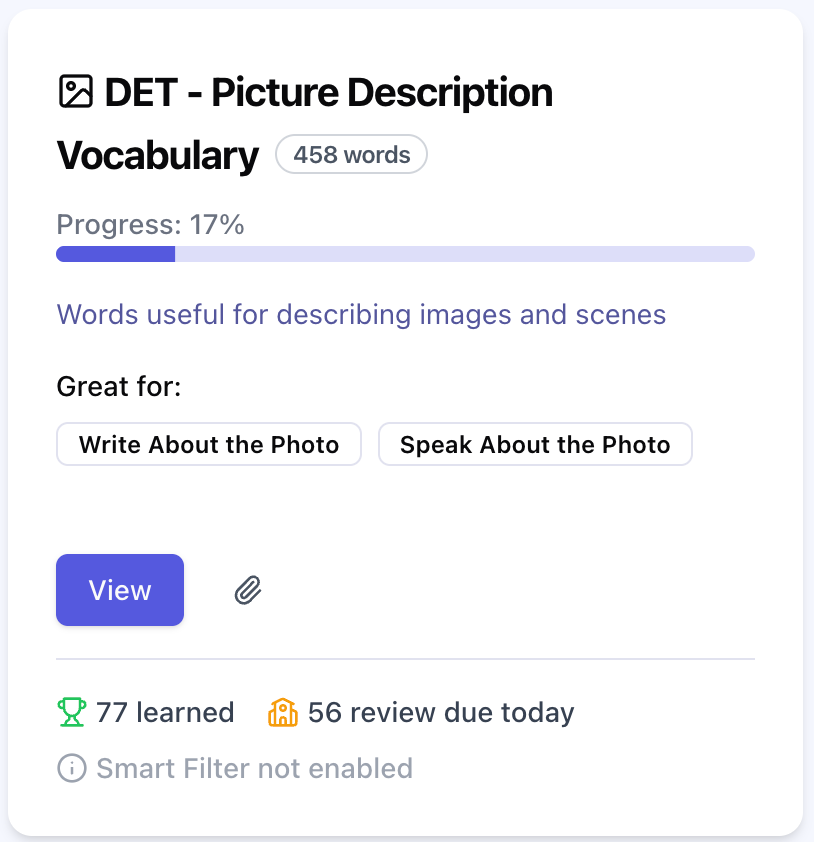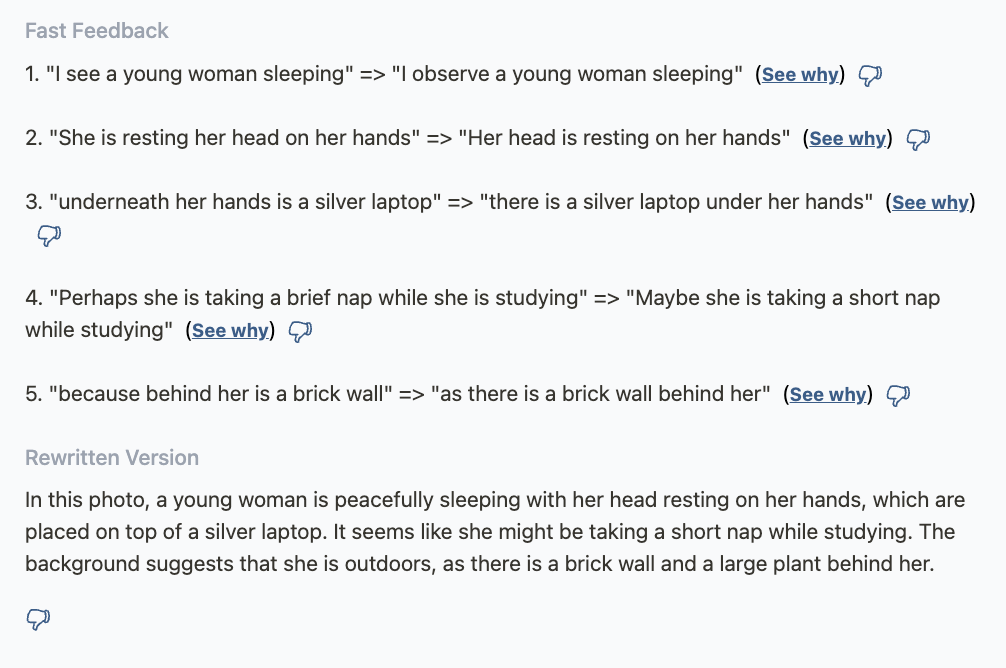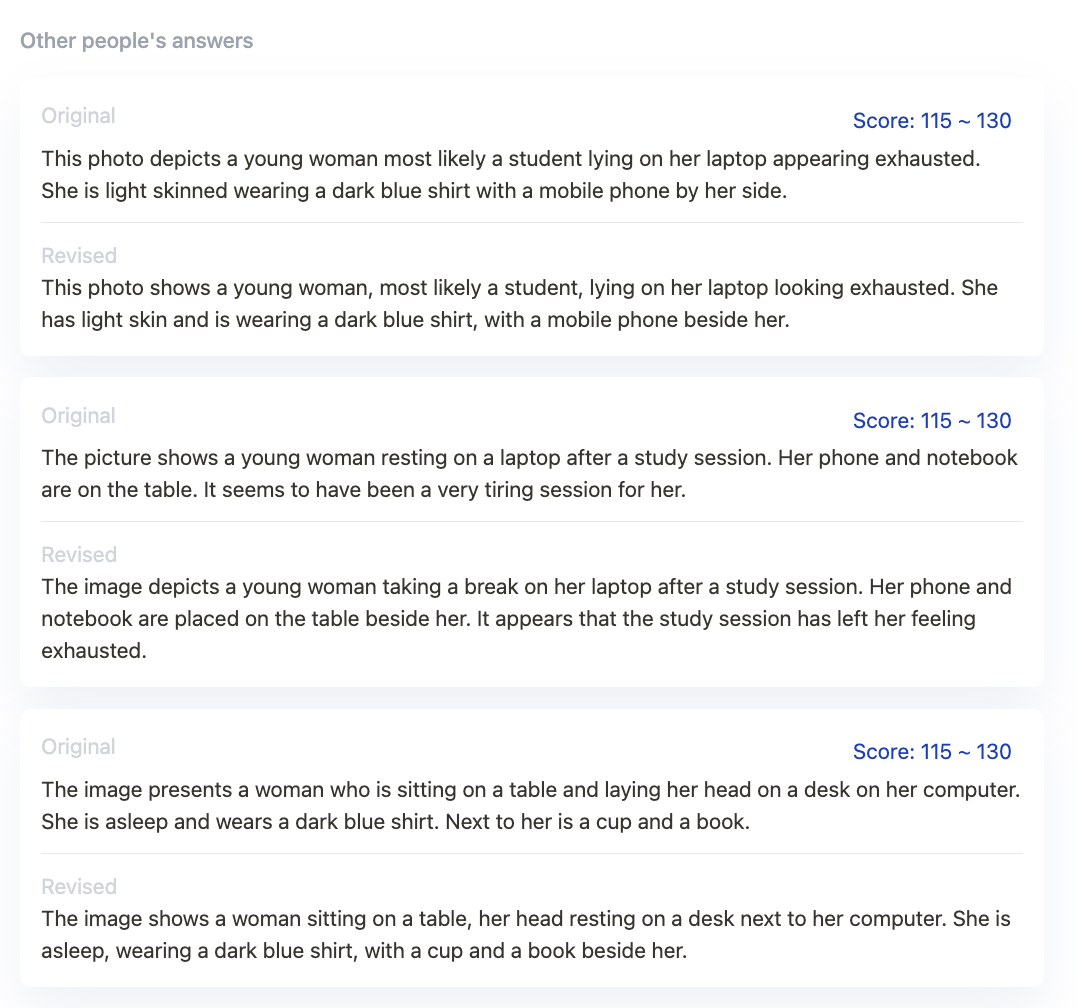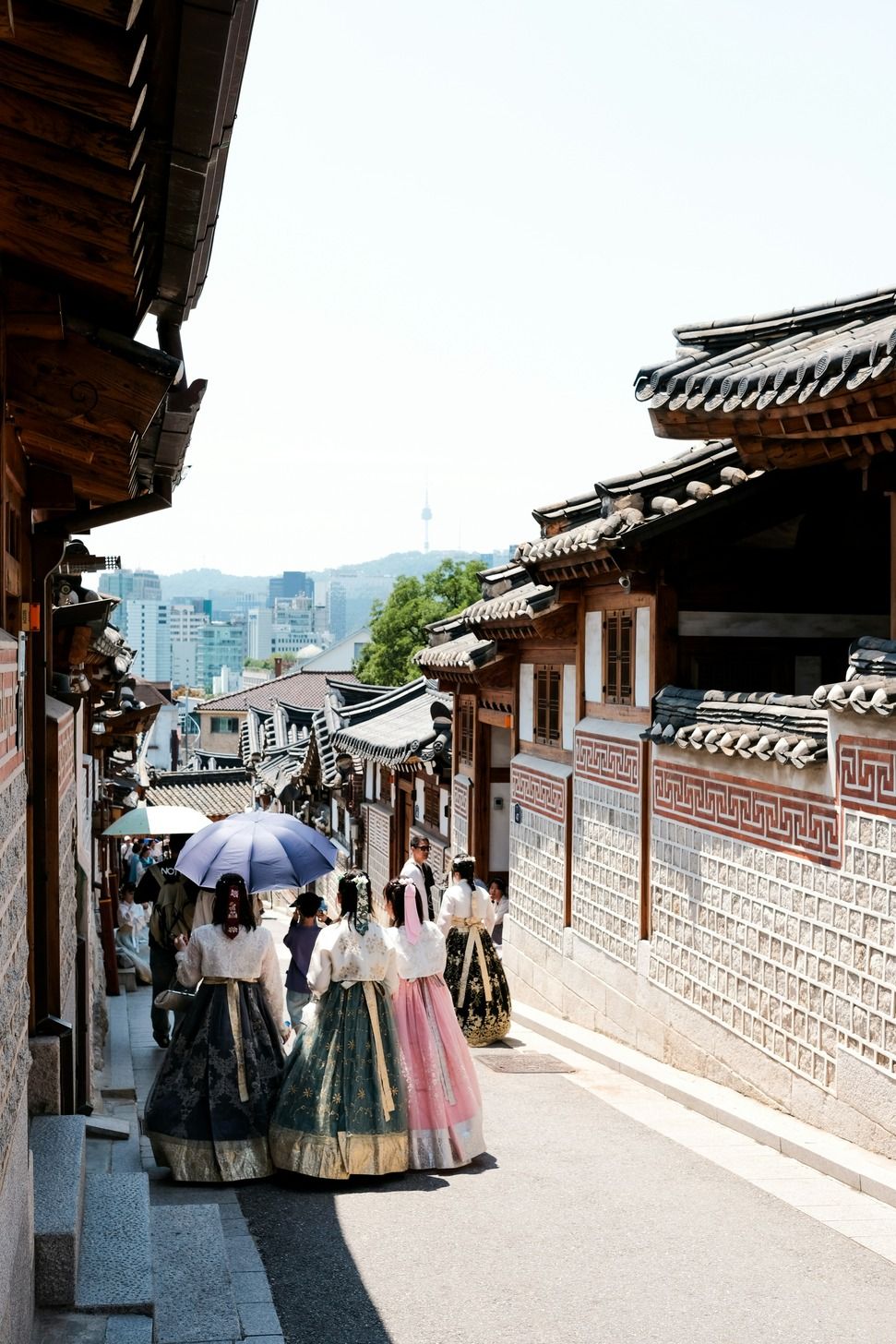Simple Template for Write About the Photo
This easy-to-use template will help you get a high score for picture description questions on the Duolingo English Test. In particular, you can use it for Write About the Photo questions, which appear 3 times on the test.
We also have a video lesson with this same content!
In addition, there are slides that you can download and share (link).
Table of Contents
- Overview of the Write About the Photo Template
- 1. General Description
- 2. Focus on a Detail
- 3. Why Are Things the Way They Are?
- 5 Example Write About the Photo Responses
Overview of the Write About the Photo Template
Many students ask, "How many sentences do I need to write for Write About the Photo questions?" With our students at Arno, we recommend that you write 3 sentences.
One sentence is definitely not enough. Two sentences may be enough, but it is a little risky. Three sentences is a safe amount. You should have enough time to write three sentences, especially if you practice.
If you cannot type fast enough to write three sentences in 1 minute, you should practice typing. It's also important that you write enough for the other writing questions on the test, so you definitely want to make sure that your typing speed is sufficient.
Another thing that will make writing 3 sentences easy is that you can use the template that you are about to learn! 😁
This template consists of 3 sentences:
- General Description
- Focus on a Detail
- Why Are Things the Way They Are?
Let's look at how to write each sentence.
1. General Description
With this first sentence, you want to provide a general description of the photo. Don't overthink this one. This sentence will likely be the easiest because we naturally describe images this way.
Here are 3 ways to begin your response.
- This image shows…
- This image depicts…
- In this image, we can see…
You should memorize all 3 beginnings and use a different one on each of the 3 Write About the Photo questions you will see on the test. Using a diversity of vocabulary, instead of repeating the same words and phrases, will get you more points.
If you want to learn the best vocabulary for picture description questions, you should check out the Picture Description Vocabulary in Arno's free Vocabulary Builder!

Here are some examples of how to use these sentence templates:
This image shows people sitting by the side of a river in a city.
This image depicts a coffee shop.
In this image, we can see a house next to a lake or river in the mountains.
2. Focus on a Detail
In the second sentence, you want to focus on a specific aspect or aspects. In other words, you want to zoom in on one part of the image and describe it in detail.
Many students ask, "Which aspect should I focus on?"
The short answer is: "Focus on what stands out to you." You only have 60 seconds to describe the image. You can't waste time just looking at the image and debating what you should describe. You need to spend every second that you can writing.
However, you should avoid describing things that you don't know the vocabulary for. So, you need to get into the habit of focusing on details that you can describe well using advanced vocabulary.
The best way to do this is to practice picture description questions. In Arno, you get unlimited practice questions for every question type for free – including Write About the Photo questions. When you purchase credits, you can also get detailed feedback on your response that will enable you to quickly raise your score.



To get create your free account, just click below!

Here are questions that you can ask yourself that will help you identify details that you could describe:
- What are people doing?
- What are people wearing?
- How old are people?
- Where are things located?
- What color are things?
- What size are things?
- What are things made of?
- What are things not?
Let's look at some examples so that you can see how to write your second sentence.
You could write:
- In the background, I can make out a large bridge.
- The man is wearing a black jacket or sweater and black shorts.
- The woman is wearing a white long sleeve shirt and black pants.
- Next to them is lush grass and a large tree.
All of these would be appropriate second sentences.

For the second sentence for this image, you could write:
- The three young women closest to the camera are wearing big dresses and white blouses.
- The buildings have intricate walls and roofs that appear to be in a traditional style.
- In the distance, we can make out tall, modern buildings.
For this image, you could write:
- The train is small and white.
- The train is not underground but rather on a track raised above the street.
- There are not many lights on in the buildings behind the train.
You can see that there are many possibilities for the second sentence. The details in every image are different, so it's impossible to use the same vocabulary words and phrases in the second sentence for all of your responses.
However, this doesn't mean that the second sentence has to be difficult. On our YouTube channel, we have a bunch of videos that will teach you vocabulary that you can use in this second sentence. Here is one of them:
3. Why Are Things the Way They Are?
In your final sentence, you are going to guess why things are the way they are. You can use your imagination to speculate. This allows you to talk about more than just what you see in the image. By speculating, you can use more advanced and diverse vocabulary in your response and get a higher score.
In short, you are going to ask yourself, "Why?" about some detail in the image.
Here are 3 ways to start your third sentence:
- Perhaps
- Presumably
- It may be the case that
These all indicate that you are speculating.
Let's look at some examples:
Here are my first two sentences:
- This image shows two people taking a walk along a river.
- In the background, I can make out a large bridge.
And for my third sentence, I could ask myself, "Why are these people taking a walk?" and here would be my guess:
3. Perhaps they are a couple who is taking a walk on a Sunday afternoon.

Here are three sentences possible sentences to describe this image:
- This image depicts people walking along a narrow city street.
- The buildings have intricate walls and roofs that appear to be in a traditional style.
If I ask myself, "Why are these buildings in a traditional style?" I could write the following for my third sentence:
3. Presumably, this is the historic area of a town or city that has been preserved.
For this image, we could write:
- In this image, we can see a train going through a city.
- There are not many lights on in the buildings behind the train.
- It may be the case that this photo was taken at the end of the work day after everyone has gone home.
5 Example Write About the Photo Responses
Now that you understand this simple yet effective template, let me give you 5 more example responses so that you can really understand it.
Example 1
- This image shows a young girl eating an apple or a piece of bread.
- This little girl has large, striking blue eyes.
- Perhaps she is hungry after she was outside playing with her friends.
Example 2
- This image depicts a woman brewing coffee.
- She is wearing a red shirt and jeans.
- Presumably, she works at a coffee shop and she is preparing an order for a customer.
Example 3
- In this image, we can see a basket of colorful fruit and flowers.
- There are peaches, cherries, and apricots, and they all look delicious.
- It may be the case that this is a picnic basket someone arranged for an afternoon outside.
Example 4
- This image shows a man hiking with a flashlight.
- In the background are impressive, snow-covered mountains.
- Perhaps he started his hike very early in the morning before the sun has come up.
Example 5
- This image depicts a modern office building.
- The building is made of concrete and it is open to the outside.
- Presumably this is an office building in a warm place where you can be outside for much of the year.
